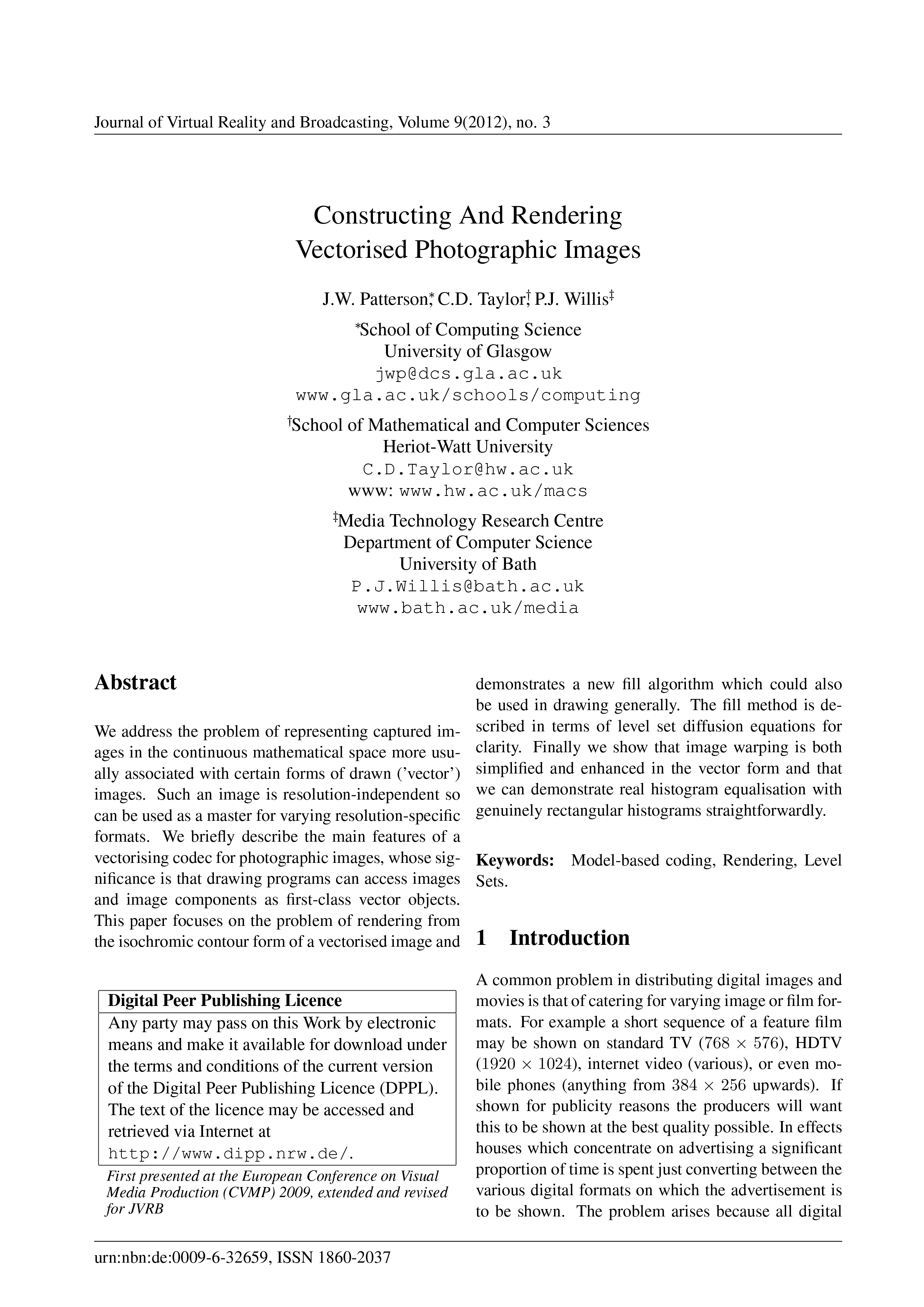Constructing And Rendering Vectorised Photographic Images
DOI:
https://doi.org/10.20385/1860-2037/9.2012.3Keywords:
Level Sets, Model-based coding, RenderingAbstract
We address the problem of representing captured images in the continuous mathematical space more usually associated with certain forms of drawn ('vector') images. Such an image is resolution-independent so can be used as a master for varying resolution-specific formats. We briefly describe the main features of a vectorising codec for photographic images, whose significance is that drawing programs can access images and image components as first-class vector objects. This paper focuses on the problem of rendering from the isochromic contour form of a vectorised image and demonstrates a new fill algorithm which could also be used in drawing generally. The fill method is described in terms of level set diffusion equations for clarity. Finally we show that image warping is both simplified and enhanced in the vector form and that we can demonstrate real histogram equalisation with genuinely rectangular histograms straightforwardly.
Published
2013-06-28
Issue
Section
CVMP 2009





